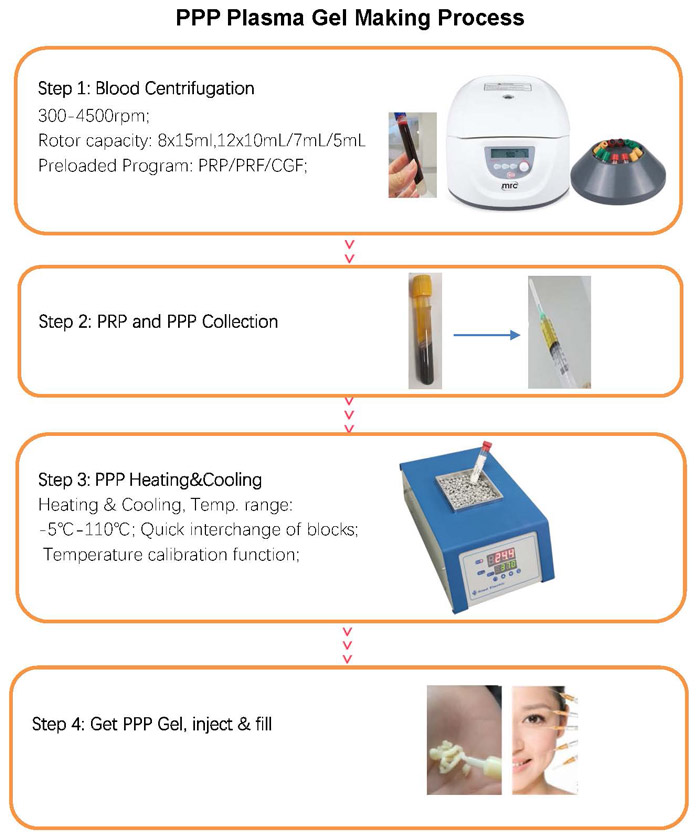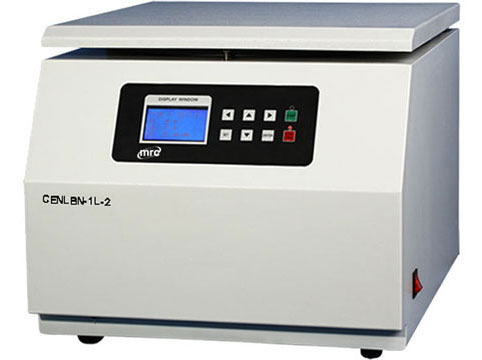Important issues to notice when performing centrifugal separations: Centrifugation data should be stated either in units of Relative Centrifugal Force (RCF) or gravities (g), or the data should be stated so RCF can be calculated using revolutions per minute (RPM) and the dimensions of the centrifuge rotor. Centrifugation at the same RPM and duration will exert different centrifugal forces on samples if centrifuge rotors having different radius sizes, bucket types or bucket sizes are used. Different centrifugal forces produce different sample separation rates at the same RPM and duration. In order to reproduce the experimental conditions when a different type or make of rotor is to be used, it is essential to know the precise dimensions and characteristics of each rotor. If the RPM and rotor radius is known, a monogram chart can be used to determine the RCF. RCF (or g) can be calculated by using the following formula (Rickwood, 1984, p. 288):

RCF=11.18×r×(N/1000)²
r = the radius in centimeters from the center of the rotor to the sample during centrifugation
N = the rotor speed in RPM
Read more about Centrifugal Force
PPP Plasma Gel Making Process

What is Principle operation of Centrifuge?
The principle of centrifuge can be explained in the same way as sedimentation can be. The reason behind this is the difference in densities. Concerning density, the lighter ones float on top of the container while the denser particles sink.
Types of Centrifuge:
• Low speed Centrifuges
• Ultra centrifuge-These high-speed centrifuges can reach up to 1,000,000 g and are used for separating very fine particles and macromolecules like proteins and nucleic acids.
• High speed Centrifuges
• Microcentrifuge-Designed for small volumes, microcentrifuges are perfect for tasks requiring high speeds and small sample sizes, such as DNA and RNA analysis.
• Benchtop centrifuge-A benchtop centrifuge is a laboratory device used to separate components of a liquid mixture based on their densities by spinning them at high speeds
• Refrigerated
• Floor-standing Centrifuges
• Blood Centrifuges-A blood centrifuge is a specialized type of centrifuge used to separate the different components of blood for clinical and research purposes.
• Hematocrit Centrifuges-A hematocrit centrifuge is a specialized type of centrifuge used to determine the hematocrit level, which is the proportion of red blood cells (RBCs) in a blood sample. This measurement is essential for diagnosing and monitoring various medical conditions such as
• Clinical PRP/PRF Centrifuges-These are specifically designed for use in medical laboratories for tasks such as blood and urine separation.
Application of Centrifuges
-To separate fluids, gases, or liquids
-Used for cell, organelle, virus, protein, and nucleic acid purification.
-Separation of blood components.(serum or plasma)
-Separation of mixtures with close densities
-liquids separation
-Protein extraction
-Isotope
-DNA extraction
Medical and Clinical Applications
Centrifuges are crucial in medical labs for separating blood components, preparing urine samples, and more.
Scientific Research
From cellular biology to chemistry, centrifuges help in purifying cells, proteins, and nucleic acids, enabling researchers to perform precise analyses.
Industrial Applications
Industries use centrifuges for oil separation, water treatment, and food processing, among other tasks.
What industries are centrifuges for?
-Dentists
-Orthopedics
-Beauty salons
-Hair transplants
-Veterinarians
-Dialysis / nephrology institutes
- Blood and urine tests
-Hematology Labs, Immunology
-Cosmetics:Used to purify raw materials and mix ingredients for cosmetic products
-Medical and Healthcare: Used in laboratories for blood separation, urine testing, and preparing samples for analysis.
Pharmaceutical:Used in drug manufacturing to separate chemical compounds, isolate active ingredients, and purify vaccines.
Biotechnology:Employed in cell separation, DNA extraction, protein purification, and other research processes.
Chemical and Petrochemical:Used to separate liquids and solids, purify chemicals, and refine petroleum products.
Food and Beverage:employed in dairy processing (e.g., separating cream from milk), wine clarification, and juice extraction.
Environmental and Waste Management:Used in wastewater treatment to remove sludge and separate solids from liquids.
Oil and Gas:
Utilized in the extraction and refinement of oil, separating impurities from crude oil and refining petroleum products.
Agriculture:Used in the production of biodiesel and separating animal by-products.
Mining and Mineral Processing:
Applied in ore and mineral separation, including dewatering and recovery processes.
How to choose a Centrifuge
Considerations for Selection
• Sample Size: The volume and type of samples you'll be working with.
• Speed Requirements: Depending on the separation needed.
• Temperature Control: Essential for heat-sensitive samples.
Common Features and Specifications
• Maximum RPM: Indicates the top speed.
• Capacity: The volume it can handle at once.
• Refrigeration: Some models come with cooling systems.
CENTRIFUGES For Sale
MRC supply a wide range of Centrifuges. Different sizes and volumes. Contact us
